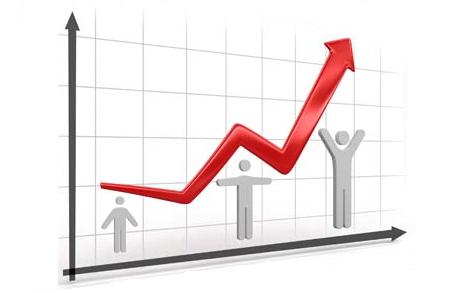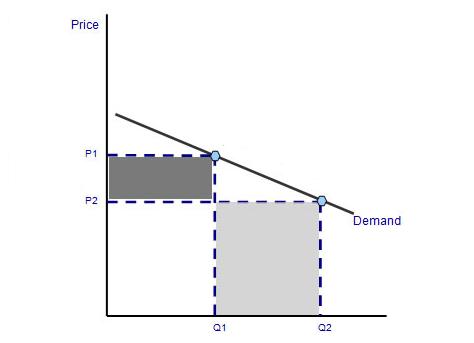Profit maximization is the most popular hypothesis in economic analysis, but there are many other important objectives, which are not to be avoided by any firm. Modem business firms pursue multiple objectives. An important aspect of profit is its use in measuring and controlling performances of the individuals of the large business firms. Researches have concluded that the business individuals of middle and top management often deviate from profit objective and try to maximize their own utility functions. They give importance to job security, personal ambitions for promotion, larger perks, etc. But this often conflicts with firms profit-making objective. The reasons for conflicts are as follows: More energy is spent in expanding sales volume and product lines than in raising profitability. Subordinates spend too much time and money doing jobs perfectly regardless of its cost and usefulness. Individuals depend more to the needs of job security in the absence ofContinue reading
Economics Principles
The Concept of Profit Standards in Managerial Economics
Standards of reasonable profits are determined when a firm chooses to make only reasonable profits rather than to maximize its profit. The questions that arise in this regard are as follows: What form of profit standards should be used? How should reasonable profits be determined? These questions can be understood after going through the following explanatory points. Forms of Profit Standards Profit standards is determined in terms of the following: Aggregate money terms Percentage of sales, and Percentage return on investment. All these standards are determined for each product separately. Among all the forms of profit standards, the total net profit of the firm is more common than other standards. But when the purpose is to discourage the competitors, then the target rate of return on investment is the appropriate profit standard, provided the cost curves of competitors’ are similar. The profit standard in terms of ratio to sales isContinue reading
Alternative Objectives of Business Firms
The traditional theory does not distinguish between owners and managers’ interests. The recent theories of firm, which are also called managerial and behavioral theories of firm, assume owners and managers to be separate entities in large corporations with different goals and motivation. In this section, some important alternative objectives of business firms, especially of large business corporations are also discussed. 1. Baumol’s Hypothesis of Sales Revenue Maximization According to Baumol, “maximization of sales revenue is an alternative to profit maximization objective“. The reason behind this objective is to clearly distinct ownership and management in large business firms. This distinction helps the managers to set their goals other than profit maximization goal. Under this situation, managers maximize their own utility function. According to Baumol, the most reasonable factor in managers utility functions is maximization of the sales revenue. The factors, which help in explaining these goals by the managers, are following: Salary and other earnings of managers are more closely related to seals revenue than toContinue reading
Arguments in Favor of Firms Profit Maximization Objective
Profit maximization is the most important assumption, which helps the economists to introduce the price and production theories. The traditional economic theory assumes that the profit maximization is the only objective of business firms. According to this theory, profits must be earned by business to provide for its own survival, coverage of risks, growth and expansion. It is a necessary motivating force and it is in terms of profits that the efficiency of a business is measured. It forms the basis of conventional price theory. Profit maximization is regarded as the most reasonable and analytically the most productive business objective. The profit maximization assumption in this theory helps in predicting the behavior of business firms and also the behavior of price and out pet under different market conditions. No alternative hypothesis or assumption explains and predicts the behavior of firms better than the profit maximization assumption. The traditional theory supportsContinue reading
Applications of the Price Elasticity of Demand
The concept of elasticity of demand plays a crucial role in the pricing decisions of the business firms and the Government when it regulates prices. The concept of price elasticity is also important in judging the effect of devaluation of a currency on its export earnings. If has also a great use in fiscal policy because the Finance Ministry has to keep in view the elasticity of demand when it considers to impose taxes on various commodities. We shall explain below the various uses, applications and importance of the elasticity of demand. Elasticity of demand is mainly useful in Pricing Decisions by Business Firms. The business firms take into account the price elasticity of demand when they take decisions regarding pricing of the goods. This is because change in the price of a product will bring about a change in the quantity demanded depending upon the coefficient of price elasticity.Continue reading
Demand Curve under Different Market Structures
Firm Demand (company demand) denotes the demand for the product/s of a particular firm. While Industry demand means the demand for the product of a particular industry. An industry comprises all the firms or companies producing similar products which are quite close substitutes to each other irrespective of the differences in their brand names. To understand the relation between company and industry demand necessitates an understanding of different market structures. The demand curve of an individual firm is not the same as the industry or market demand curve except in case of monopoly. Monopoly is that market category in which there is only a single seller and therefore there is no difference between a firm and an industry. The firm is itself an industry and therefore the demand curve of the individual firm as well as the industry demand curve under monopoly will be the same and as we shallContinue reading


